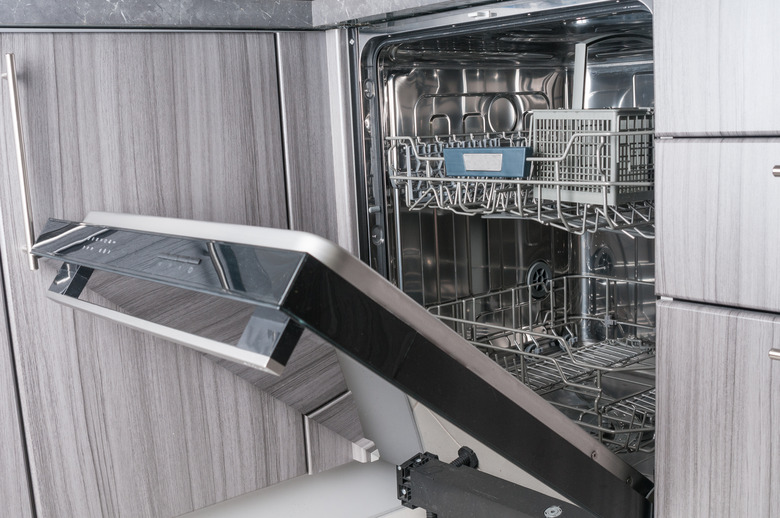How To Remove The Dishwasher Plug On An InSinkErator
It has happened more than once. A homeowner or inexperienced handy person installs a new garbage disposal and hooks up the dishwasher. The first time the dishwasher is used, water floods from the dishwasher or the air gap mounted on the countertop. The installer forgot to remove the garbage disposal drain plug, which is there to prevent a leak when you don't connect a dishwasher.
This is an easy mistake to correct, especially if the garbage disposal is an InSinkErator. The best time to do it is when you're installing the garbage disposal, but you can do it afterward, although it may involve dismounting the garbage disposal and installing it again.
Remove an InSinkErator Drain Plug
Remove an InSinkErator Drain Plug
If you're installing a new InSinkErator garbage disposal, and you plan to hook up a dishwasher, InSinkErator tells you that the best time to remove the drain plug is after installing the mounting bracket on the sink drain and before you mount the garbage disposal. The plug is similar to the knockout plug on a metal electrical box, and you remove it the same way:
- Lay the garbage disposal on its side with the dishwasher drain opening facing you.
- Insert a screwdriver into the drain opening far enough to contact the plug, then tap the screwdriver firmly with a hammer to knock out the plug.
- Retrieve the plug by reaching into the garbage disposal (which is safe to do, because it's unplugged) or inverting the garbage disposal and shaking it out.
Forgot to Remove Drain Plug
Forgot to Remove Drain Plug
The drain plug is there to keep the disposal sealed if you don't connect a dishwasher. Its purpose is to prevent water from escaping, so if you forgot to remove the dishwasher plug from the garbage disposal, it isn't going to let in any water from the dishwasher, and it has to go. You can usually do this while the garbage disposal is in place:
- Turn off the power to the garbage disposal. Either unplug it or, if it's hardwired, turn off the circuit breaker. Try the switch to make sure the power is off.
- Disconnect the dishwasher drain hose.
- Enlist a helper to support the garbage disposal from the back while you insert a screwdriver into the dishwasher drain opening and tap it with a hammer.
- Retrieve the plug from the mouth of the garbage disposal.
You may lack room for your tools in the cramped space under the sink, in which case you have no choice but to disassemble the drain, disconnect and pull down the garbage disposal, and remove the drain plug as you would if you were installing the garbage disposal for the first time.
Hooking Up the Dishwasher Drain
Hooking Up the Dishwasher Drain
The dishwasher drain hose is a corrugated plastic tube with a rubber boot on the end. The boot should fit snugly over the drain opening on the garbage disposal. Before you connect the hose, slip a metal pipe clamp over it. After connecting the hose, be sure to slide this clamp over the drain outlet and tighten it down with a screwdriver or nut driver.
Remember to make a high loop in the drain hose by securing it to the underside of the countertop. This loop is mandated by code to prevent the contents of the sink drain from contaminating the dishwasher if the sink overflows. Some plumbing jurisdictions go further, requiring you to connect the hose to a special fitting called an air gap, which is mounted on the sink deck or the countertop. Be sure to check whether or not this requirement applies in your area.
